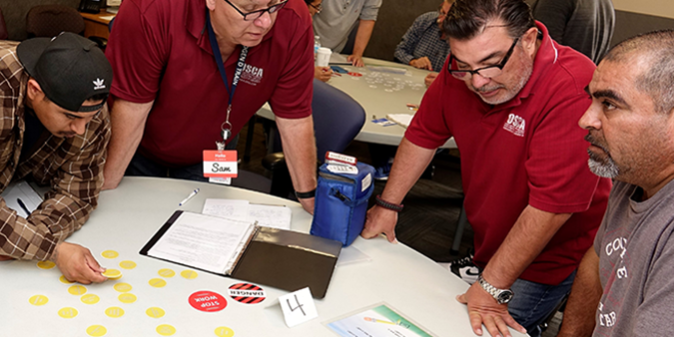3 Key Elements of Effective Safety Training

Safety training is key to a productive workforce. Here are three tips to increase worker engagement and develop a safer workforce.
Author: Lisa Fade
December 2, 2022
Is your safety training effective?
Safety training should never be a boring necessity.
Every HR or EH&S manager knows the goal of safety training is to build an effective safety culture, reduce company liability, and potentially save lives. But are your courses effective?
Old school approaches create outdated results
The uncomfortable plastic seats and plates of donuts that normally greet safety training meeting attendees, combined with these “old school” training techniques can reduce the odds of anyone internalizing useful information:
Endless PowerPoint presentations
Round-robin reading
Limited group interaction and feedback
While attendees may remember part of the information presented, there is no guarantee they understand it, much less if they will be able to apply it in situations outside the classroom when it matters most. How can this be improved?
Safety training is more than just checking off a box
OSCAsafe trainers employ three key elements in their industry-leading training programs. These advanced adult education techniques help facilitators to both assess the effectiveness of the training and meet the needs of the individuals in the class.
Be learner-focused
Everyone learns differently, and today’s workforce is more diverse than ever. Whether participants are brand new to the industry or 30+ year veterans, a good facilitator that asks open-ended questions can almost always promote a stimulating conversation. Rather than giving the class the answers in a lecture, the goal is to guide them to a place of self-discovery.
Be relevant
If an attendee can’t relate to a topic, you’ve effectively lost them right off the bat, so facilitators should be industry professionals with real-life experience to offer the class. These anecdotes can bring the information to life for attendees in a way they’ll understand and stimulate class participation. In addition, with proper moderation, there is a chance for sharing ideas and experiences amongst the class.
Be engaging
Facilitators who employ gamification techniques can stimulate cooperative learning and increase learner involvement. Games give everyone a chance to actively participate in class, rather than passively listen to an instructor. The various activities reinforce topics introduced, ultimately increasing retention of safety concepts.

With OSCAsafe, safety is a mindset
Effective adult education techniques are at the core of OSCAsafe’s work. Our classes are designed to highlight that safety is personally important to each and every worker by creating an engaging experience.
We partner with businesses to help create an effective safety culture and ensure that participants fully understand that safety is a mindset and not a one-time thing that ends at the end of the workday.
Contact OSCAsafe to discuss how we can help you create effective safety training for your organization.

